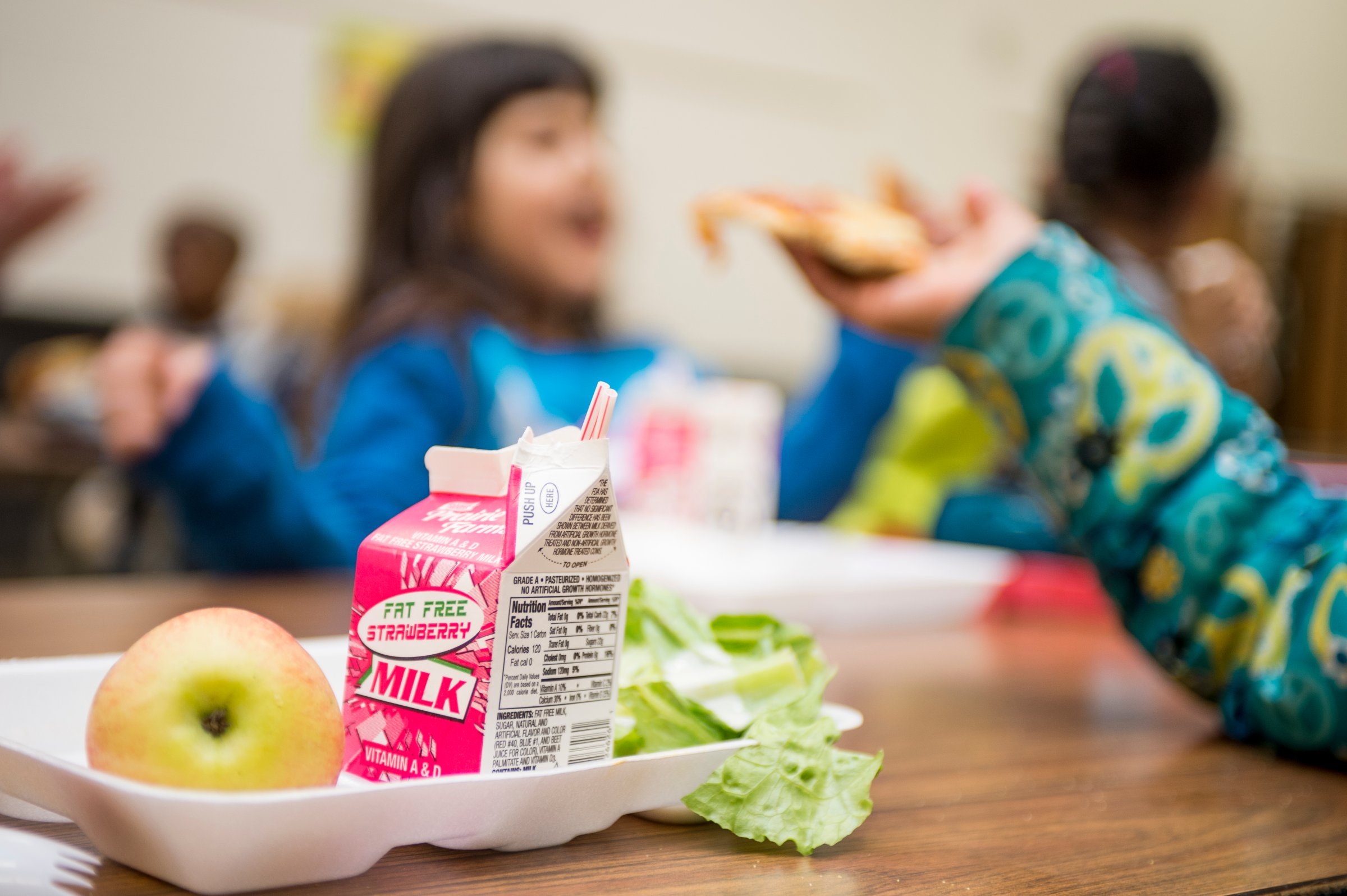
Some high-poverty school districts are bracing for the fact that federally funded lunch programs could become a casualty of the government shutdown if it drags on for another month.
At least one district in rural North Carolina is taking precautionary measures, cutting out treats like ice cream and reducing lunch menus to the “minimum level to conserve food and funding” starting Tuesday. The shutdown, which started Dec. 22, is the longest in U.S. history.
“We’re in uncharted waters. We’ve never gone through anything like this before. The shutdown has gone on longer than any other, and we don’t know how long it’s going to last,” Terri Hedrick, spokesperson for Vance County Schools in Henderson, North Carolina, tells TIME.
The district — which provides free breakfast and lunch to all students — plans to start offering one main lunch entree, bread, two vegetables, one fruit and milk, cutting out a choice of multiple lunch entrees. The district will also stop offering ice cream and will only offer bottled water and juice until the current inventory runs out.
“No fresh produce will be included, except at elementary schools as part of the Fresh Fruit & Vegetable Program,” the district said in a Facebook post. “This program will be decreased to two days each week.”
Vance County schools provide free breakfast and lunch to all students in the district — where more than 90% of students qualify for free and reduced-price lunch — through the Community Eligibility Provision (CEP), a federal grant established by the Healthy, Hunger-Free Kids Act of 2010 for schools in low-income areas. Through the CEP, schools serve breakfast and lunch at no cost to students and are later reimbursed by the United States Department of Agriculture (USDA), which is one of nine federal departments and agencies affected by the shutdown.
About 20 million students in nearly 100,000 schools also receive free lunches through the National School Lunch Program, and another 2 million students receive reduced-price lunches. The United States Department of Agriculture has emphasized that such child nutrition programs have been fully funded through March.
“There’s understandable concern about child nutrition programs, but this needs to be clear: USDA’s child nutrition programs are funded quarterly and are fully funded through the end of March. Includes National School Lunch, School Breakfast, and Child & Adult Care Food programs,” U.S. Secretary of Agriculture Sonny Purdue tweeted on Friday afternoon.
But Hedrick says her district has started to prepare for the worst-case scenario, rationing food to make sure that its more than 6,000 students don’t go hungry if the shutdown continues.
“We haven’t run out of food, but we feel like taking these proactive steps will enable us to save food supplies and money,” Hedrick says. “We’re a small rural district in a low-wealth county here in North Carolina, and we don’t have an abundant amount cash reserves to support our school nutrition program if the federal funds aren’t there.”
Meanwhile, many school districts have also had to expand their free-lunch offerings to help students whose parents are federal employees who have been furloughed or forced to work without a paycheck during the shutdown.
The Supplemental Nutrition Assistance Program (SNAP), which provides food stamps to more than 40 million Americans, will continue to be funded through February, but many SNAP recipients received their February benefits early this month and will not receive another payment until the shutdown ends. Government agencies and advocacy groups have urged SNAP recipients to budget carefully.
At a press conference on Thursday, New York City Mayor Bill de Blasio told residents to “prepare for the worst,” warning that 1.6 million New Yorkers will lose access to SNAP benefits on March 1.
“We are now entering nothing less than a full-blown crisis that is about to have a massive effects on the people of New York City, and it is a crisis with no end in sight,” he said.
“If you said, ‘Tell me what might be your number one concern,’ it is food for children. This crisis could literally mean that food was taken out of the mouths of children,” de Blasio said, adding that New York City schools would draw on reserve funding to continue offering meals at school.
“It’s going to be a real challenging situation.”
More Must-Reads From TIME
- The 100 Most Influential People of 2024
- The Revolution of Yulia Navalnaya
- 6 Compliments That Land Every Time
- What's the Deal With the Bitcoin Halving?
- If You're Dating Right Now , You're Brave: Column
- The AI That Could Heal a Divided Internet
- Fallout Is a Brilliant Model for the Future of Video Game Adaptations
- Want Weekly Recs on What to Watch, Read, and More? Sign Up for Worth Your Time
Write to Katie Reilly at Katie.Reilly@time.com